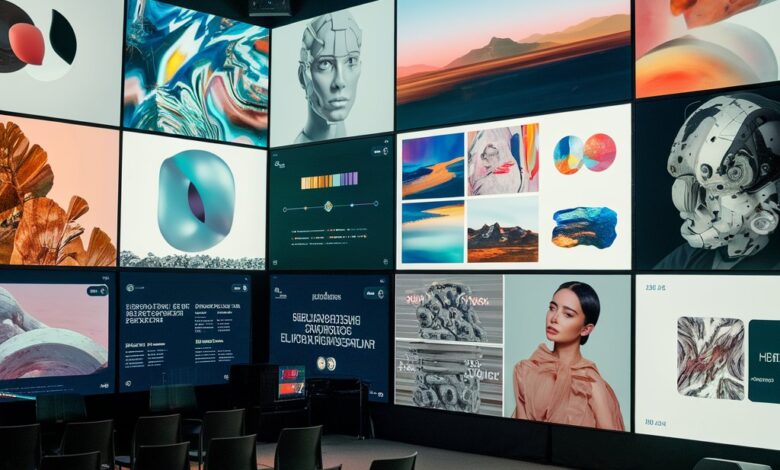The Rise of AI Image Generators: Changing Creative Industries

In the fast-paced digital era, artificial intelligence renews the very way one creates, communicates, and innovates. Among a variety of breakthrough applications, AI image generators have emerged as strong tools that successfully merge technology and artistry, reshaping industries from advertising to architecture.
The Technology Behind AI Image Generators
AI image generators use advanced algorithms like deep learning and neural networks to produce highly realistic and imaginative visuals. By training on massive datasets of images, they learn patterns, colors, and compositions, enabling the creation of unique visuals from hyper-realistic portraits to abstract art through just a few clicks or text prompts.
With platforms like DALL-E, Stable Diffusion, and MidJourney gaining popularity, this technology has become accessible to both professionals and hobbyists. Tasks that once required advanced graphic design skills or years of artistic training can now be accomplished effortlessly, making complex designs and conceptual imagery more achievable than ever.
Changing the Face of Creativity
1. Advertisements and Marketing
Brands are increasingly using AI image generators to create striking visuals that align with campaigns. These tools help marketers save time and resources by producing bespoke product mockups or dynamic social media posts, all without compromising on quality.
2. Film and Gaming Industries
AI image generators are revolutionizing entertainment, where concept artists and developers rely on these technologies to visualize characters, environments, and storyboards during pre-production. This speeds up processes and fosters creativity, bringing ideas to life that might otherwise remain unexplored.
3. E-commerce and Retail
In e-commerce, visuals play a crucial role in customer engagement. AI image generators enable businesses to craft customized product images, lifestyle mock-ups, and virtual try-ons, enhancing the shopping experience and driving sales.
4. Architectural Design
AI-driven visuals allow architects and interior designers to create photorealistic renderings of spaces, helping clients visualize projects before construction begins.
Benefits and Ethical Considerations
The efficiency of AI image generators is unmatched. They lower production costs, accelerate timelines, and democratize access to creative tools. However, they also raise important ethical questions about copyright, artistic authenticity, and job displacement.
Who owns the rights to AI-generated art? How does it affect traditional artists? These issues are being debated by governments and industry leaders, who are working toward transparent data sourcing, fair usage policies, and the ethical development of AI.
Future of AI Image Generation
As AI evolves, its applications will extend beyond creative industries to education, healthcare, and more. Imagine students visualizing historical events with AI-generated scenes or doctors using AI-created models for medical training.
In the UK, particularly in creative hubs like London, AI image generators present an opportunity to lead global innovation in digital art and design. Embracing this technology can position British creatives at the forefront of emerging trends.
Conclusion
AI image generators are not just tools but a testament to human ingenuity amplified by technology. While challenges exist, their potential to inspire, innovate, and transform industries is undeniable. As we venture further into this frontier, balancing creativity with responsibility is crucial, ensuring that AI serves as a collaborator, not a competitor.



